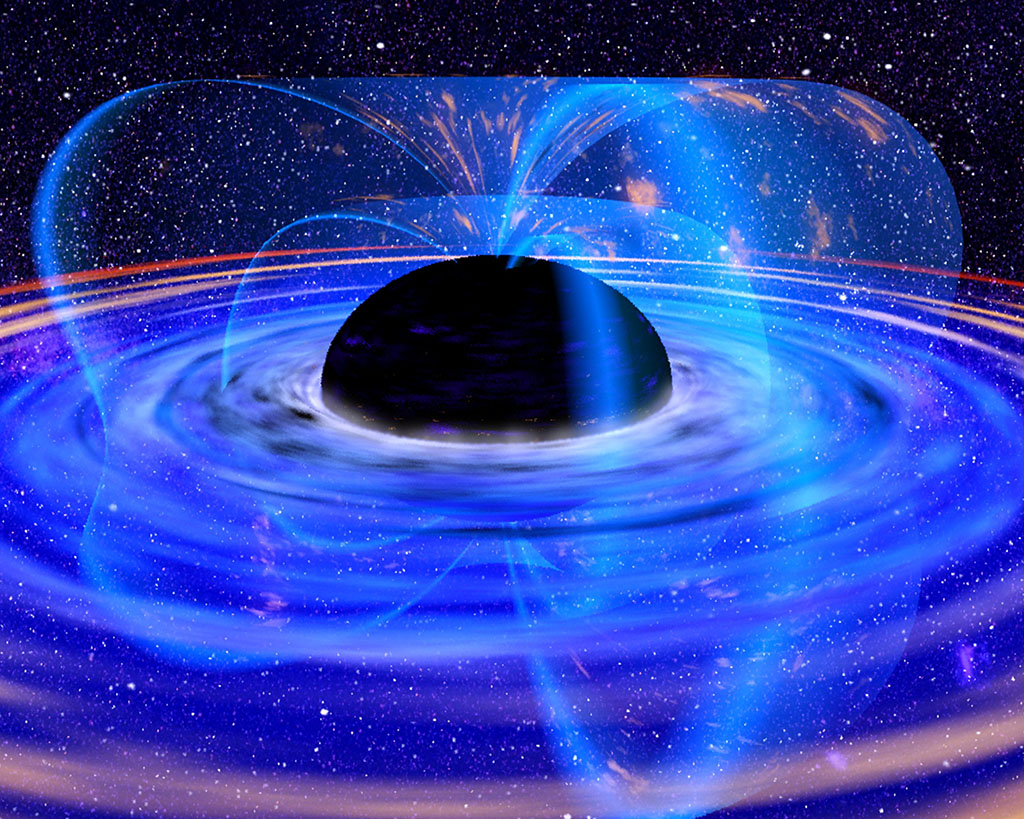Black holes are undoubtedly one of the most bizarre and intriguing phenomena in the universe. We’ve only known about them for about a hundred years, though their existence has been postulated since the 18th century.
What is a black hole, anyway? What really happens when you fall into one? Astronomers and physicists have been wrestling with black hole mysteries for years, but a growing consensus has emerged on a number of points. Check out this list for the latest cool facts about black holes and how they operate.
1. You Cannot See a Black Hole

Photo credit : NASA – Wikipedia
The defining feature of a black hole is its unfathomably intense gravitational pull. The pull is so strong that, once trapped, nothing can escape from its clutches – including light. Because no light can be emitted, a proper black hole is invisible. The only way to ‘see’ one is by observing its effects on other stuff. Astronomers have discovered many black holes by observing x-rays radiating out from an apparent source. Looking closer, they find the source is swallowing hundreds of times more energy than it is radiating – that’s a black hole.
2. A Black Hole Is Bounded By an ‘Event Horizon’

Photo credits: NASA - Wikipedia
If you ever find yourself being pulled into a black hole, don’t panic – at least not until you reach the event horizon. The “event horizon” is a mind-bending feature unique to black holes. The ultimate point of no return, it’s a one-way ticket to a horrifying death. You are pulled apart on impact, bit by bit, your particles unceremoniously scattered to the wind. At least, that’s how it appears to an outside observer.
3. There Are Baby and Supermassive Black Holes

Photo credit : ESO/M. Kornmesser – Wikipedia
Black holes come in two flavors: stellar mass and supermassive black holes. When a large star dies, its cold remnants achieve an afterlife in the form of a “stellar mass” black hole. Essentially, the star gets so large that it collapses in on itself, creating a black hole. These run-of-the-mill holes are common; there are nearly a billion in our own Milky Way galaxy alone. Size-wise, they are ten times the size of the Sun – tiny compared to “supermassive” black holes. Supermassive black holes are like mass graves for millions of dead stars. They are exponentially more massive than their stellar counterparts.
4. Black Holes Warp Spacetime

Photo credits: Wikipedia
Note, however, that mass is not the same as volume. Even in a supermassive black hole, all the mass is contained in a relatively small amount of densely-packed space. That is why black holes create a spacetime warp. The laws of the physical universe hold that a massive object squeezed into a tiny volume of space will literally warp the space around it. That’s a black hole, in a nutshell – a site of warped spacetime.
5. Black Holes Cause Spaghettification

Photo credits: NASA - Wikipedia
Because of intense gravity, black holes ‘suck’ nearby matter and energy into themselves. If a star gets close enough, it will be ripped asunder, another victim of the hole’s powerful gravitational pull. The scientific term for this destructive process is called, no joke, “spaghettification.” When a black hole consumes a star in this fashion, a telltale fireworks display of x-rays ensues to let us know what happened.
6. On a Black Hole, Space and Time Switch Roles

Photo credits: NASA - Wikipedia
As the surface boundary of a black hole, an event horizon is a truly disorienting place to be. Here, the roles of space and time are switched. Whilst normally you can move back and forth in space, but not time, once you are trapped by a black hole, you can move back and forth in time, but not space. That’s why you cannot exit a black hole. There is only one spatial direction to move in – right into the belly of the beast.
7. Black Holes Are Enigmas Wrapped in Holograms

Photo credits: NASA - Wikipedia
At first glance, it seems that black holes ‘disappear’ all the information that falls into them. But quantum mechanics says information never really disappears; it just gets redistributed. With a black hole, this redistribution occurs at the surface, just before objects collide with the event horizon. Enter the Holographic Principle.
Think of matter and energy – anything that takes up space, really – as made up of constituent ‘bits’ of information. Your body, for instance, is an organized mass of information bits. In an encounter with a black hole, though, this three-dimensional mass of bits – your body – violently decomposes into two-dimensional bits. Instead of disappearing, the bits become part of the hot surface of the black hole, its horizon. The event horizon, then, functions as a hologram in that once-3D information has been encoded on its 2D surface.
8. Black Holes Are the Ultimate Data-Storage Devices

Photo credits: NASA - Wikipedia
A black hole’s event horizon is made of superhot bits of once-organized information, broken down to its simplest form for maximum spacetime efficiency. It is like an infinite hard drive. Because of this mystifying process, the complete history of millions of stars can be ‘stored’ on the surface of a single black hole. This may be why nearly every large galaxy has its own supermassive hole at its center, gobbling up all the dying and unlucky masses of ‘data’ that happen by.
9. The Interior of a Black Hole Is Non-Observable

Photo credit: NASA - Wikipedia
What lies beyond the event horizon, inside the black hole? Nobody knows because nobody can know, not without jumping in to find out – at which point you would no longer be able to report back, since space in a black hole is unidirectional.
According to astrophysics, if someone else watches you fall into a black hole, they would not see you fall in at all. Instead, they would watch you become spaghettified right before you crossed the horizon. It is not known how much of this would be perception versus reality, however. It may be that only your image is spaghettified. From the outside, our observational abilities are inherently limited. Whether you are truly dead and gone, or just functionally gone, is practically unknowable. But it’s all the same to the outside observer.